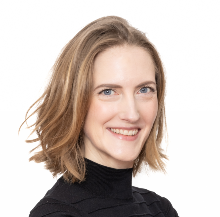We must learn to navigate the distant future to save the climate

The climate crisis has never been more pressing and unpredictable as right now.
Heat records and unprecedented weather events have gripped the globe while the stability of the Gulf Stream hangs in the balance. Moreover, projections indicate that we are on the verge of surpassing the crucial 1.5-degree temperature increase limit agreed upon in the 2015 Paris Agreement, a commitment we vowed not to breach.
Acting as an individual may prove difficult in this situation, primarily because it takes a massive effort, which most ordinary people are not influential enough to do anything about, but also because we lack the psychological preparedness to effectively deal with such abstract and gradually evolving threats like climate change. We also have a tendency to prefer current rewards over future rewards.
Nonetheless, European companies have committed themselves to becoming climate neutral by the year 2050.
But is it possible to overcome our tendency to focus on the immediate issues and shift our efforts to long-term solutions even in the absence of current technology? The answer is yes. Especially if we engage in collaborative efforts to connect short- and long-term thinking within a company.
»Companies are used to having to balance short-term goals and long-term goals. However, the climate crisis has exacerbated the temporal complexity and uncertainty by introducing the distant future into these processes. Now, companies have to translate distant-future goals into innovative solutions in the present, ensure that these solutions do not conflict with current concerns and be very imaginative and realistic at the same time. In doing so, companies may be able to develop a sustained course of action in the long term.«
These are the words of Miriam Feuls, Assistant Professor at the Department of Organization at CBS and part of the project ‘Actionable Futures’.
Together with colleagues Tor Hernes and Majken Schultz, Feuls has recently worked with Arla’s sustainable packaging workstream to explore how companies can become more climate neutral and achieve distant climate goals. Currently, Miriam Feuls is at the largest management conference, The Academy of Management in Boston, USA, to present their findings. Naturally, you can also read about them in this article.
Companies pledge their commitment
The researchers have followed the sustainable packaging team at Arla, joined their strategy meetings and interviewed employees, consultants and top management to chart the process by which a major company formulates a sustained course of action to achieve climate neutrality by 2050 as required by the Climate Act.
But before we go into detail about how companies approach this kind of task, we must consider the feasibility of all European companies achieving this standard.
»They need to do it. The climate goals have been set, and they are not negotiable. Becoming carbon neutral is a binding commitment. But how to achieve it and how to best move forward is still unknown. That is why we are focused on studying the various processes that companies engage in that may move them toward accomplishing these long-term goals.«
Considering both short- and long-term issues benefits everyone
Miriam Feuls acknowledges that they have not fully figured out the complete answer yet, which is why this article is not a complete guide for companies to obtain climate neutrality.
However, the researchers have gained valuable insights worth noting when a company has to reach a long-term goal – whether it is about climate or not.
According to Miriam Feuls, it is essential to connect current goals and requirements to the future vision.
»The companies cannot solely focus on long-term solutions. Companies cannot wait for new technologies to emerge. They also have a business to take care of, and short-term solutions are equally important in terms of the urgency to act now.«
Miriam Feuls and her colleagues conceptualise the processes of how companies interrelate short- and long-term goals in a concept called ‘path enactment’. According to Miriam Feuls and her colleagues, path enactment describes how paths are continuously created and shaped as actors move through time when they, for instance, envision and implement new technologies.
Through path enactment, companies can create intermediate steps on their way towards achieving their future vision. For example, these can be different recycling solutions such as reducing the different materials used in packaging to enhance recyclability or developing new recycling techniques, such as chemcycling or changing to new more sustainable materials as for instance in the case of the Carlsberg green fibre bottle.
Keep asking questions
In her work with the packaging department at Arla, Miriam Feuls has observed that within strategy meetings about long-term goals participants often shift back and forth between different packaging solutions, stringing together multiple possible paths toward the company’s distant-future goals by singling out ideas, envisioning how to implement them in the general ecosystem, and finally calculating benefits, costs of materials and so forth.
And even though it intuitively might look like the process may be completed when solutions become inscribed into the strategy, it is very beneficial to maintain some flexibility in your long-term strategy. This can be achieved by working with placeholders and by questioning your ideas throughout the process, says Miriam Feuls.
»The packaging workstream continuously questions their choices and asks themselves ‘Are we bold enough’? This allows them not only to stretch their imagination toward more complex and uncertain futures but also to consider new insights when they move through time. For example, new regulations or technologies may arise, or a material may become available, making a previously imagined solution viable and scalable.«
More people have become interested in time and temporality-related research
Miriam Feuls is currently at the world's largest conference for leadership research, AOM, where she will present her and her colleagues' findings.
She looks forward to meeting like-minded colleagues and says that there has been increased interest in her field of research.
»A focus on time and temporality has become very interesting in the light of the green transition; I think this topic now has the potential to appeal to a wider audience.«
The annual AOM conference is in Boston and runs from 4-8. August 2023. In 2025, Copenhagen will host the conference.
